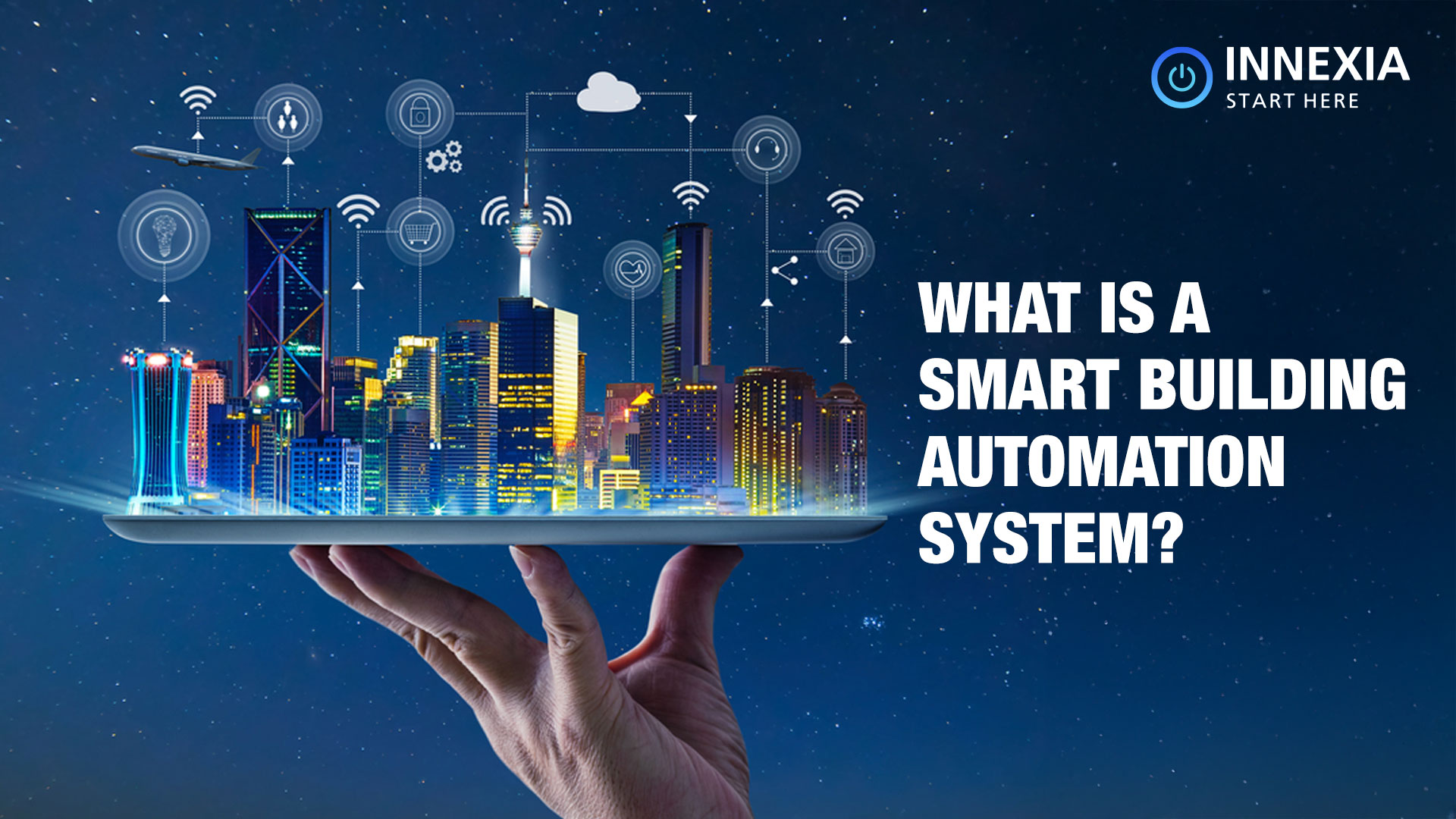Imagine stepping into a building where everything adjusts to your comfort automatically. The lights brighten, the temperature adjusts perfectly, and even the elevators respond to your needs without you having to do anything. This isn’t science fiction; it’s the power of modern commercial spaces equipped with a building automation system.
In this guide, we’ll take a closer look at how smart building automation works and how choosing the right system can help you save money.
What is Building Automation?
Building Automation involves a network of smart devices designed to monitor and control a building’s environment. This system automatically adjusts settings to improve occupant comfort, optimize energy efficiency, and enhance overall building management.
Think of it as the brain of a commercial property, coordinating various systems such as heating, ventilation, air conditioning (HVAC), lighting, and security to work together efficiently.
How Does a Smart Building Work?
A smart building collects data from user devices, sensors, and systems on-site. It uses artificial intelligence and machine learning (AI/ML) to analyze this data. This allows the building to adapt to the needs of its occupants and managers.
The smart network also improves security. It can identify and categorize devices, learning their normal behavior. This helps detect unusual activities and potential intrusions. These capabilities are vital to effective Building Automation services, creating a safe and efficient environment for everyone.
Types of Commercial Building Automation
Commercial building automation includes various systems designed to enhance efficiency and simplify operations. Here are some common types:
- HVAC Control Systems: These systems adjust heating, ventilation, and air conditioning based on occupancy and outdoor conditions, maintaining optimal indoor environments.
- Lighting Control: Smart lighting systems ensure that lights are activated only when and where they are needed. This not only conserves energy but also enhances the tenant experience.
- Security and Access Control: These systems protect restricted areas by keeping unauthorized individuals out. They also allow authorized users to move throughout the building without hassle.
- Building Component Monitoring: Equipped with sensors, a building automation system can track the performance of various components. This proactive monitoring alerts you to maintenance needs before major issues arise.
The Benefits of Smart Building Automation
Smart building automation offers several advantages, including:
- Energy Efficiency: Lower your carbon footprint while benefiting from potential insurance discounts and tax credits.
- Cost Savings: Reduce energy bills and extend the lifespan of costly equipment.
- Increased Comfort: Enhance customer satisfaction by creating more comfortable living and working spaces.
- Improved Air Quality: Maintain proper ventilation, monitor carbon monoxide levels, and manage air filter systems effectively.
- Enhanced Security: Protect against physical and virtual threats with advanced smart security systems.
Additionally, smart building automation streamlines workflows and allows facility management teams to monitor and control building systems remotely. For example, a smart building can automatically adjust the thermostat during cold weather.
If an operator identifies excessive energy use in the lighting system, they can initiate remote diagnostics without needing to be on-site. This functionality alleviates the workload for building management teams, especially in understaffed situations.
What is the Difference Between a Smart Building and a Smart Home?
Smart buildings and smart homes both use technology to improve energy efficiency and comfort. However, they differ in complexity and scope.
Smart Home
A smart home is a private residence with connected devices that make life easier. The focus is on creating comfort through automated systems for heating, lighting, and security. Common devices include smart speakers like Alexa and Google Assistant. In smart homes, most digital controls are used for lighting and entertainment.
Smart Building
A smart building, on the other hand, is more advanced. It involves connecting many systems throughout an entire building to manage energy use efficiently. Smart buildings are essential parts of smart cities, where everything is interconnected and managed digitally.
In summary, while both aim for increased efficiency and comfort, smart buildings integrate technology on a larger scale than smart homes.
Conclusion
Transforming your home into a smart haven is within reach. As a trusted Home Automation Company in Ahmedabad, Innexia specializes in creating customized automation solutions that enhance comfort, security, and energy efficiency.
With Innexia, you can experience the convenience of a connected home, streamline your daily routines, and reduce energy costs. Choose Innexia to elevate your lifestyle and enjoy the benefits of smart living tailored just for you.
FAQs
1. What is a smart building automation system?
A smart building automation system is a network of interconnected devices and technologies that monitor and control a building’s environment. It manages systems such as heating, ventilation, air conditioning (HVAC), lighting, security, and energy use to enhance efficiency and comfort.
2. Can smart building automation systems be integrated with existing building systems?
Yes, most smart building automation systems can integrate with existing infrastructure, allowing for upgrades without a complete system overhaul. This integration enhances functionality while maximizing existing investments.
3. What types of systems can be integrated into a smart building automation system?
Commonly integrated systems include HVAC, lighting, security and access control, fire alarm systems, energy management, and occupancy sensors, creating a comprehensive automation solution for the building.
4. Is a smart building automation system easy to use?
Yes, most smart building automation systems are designed with user-friendly interfaces, allowing building managers and occupants to easily monitor and control various systems through mobile apps or web platforms.




